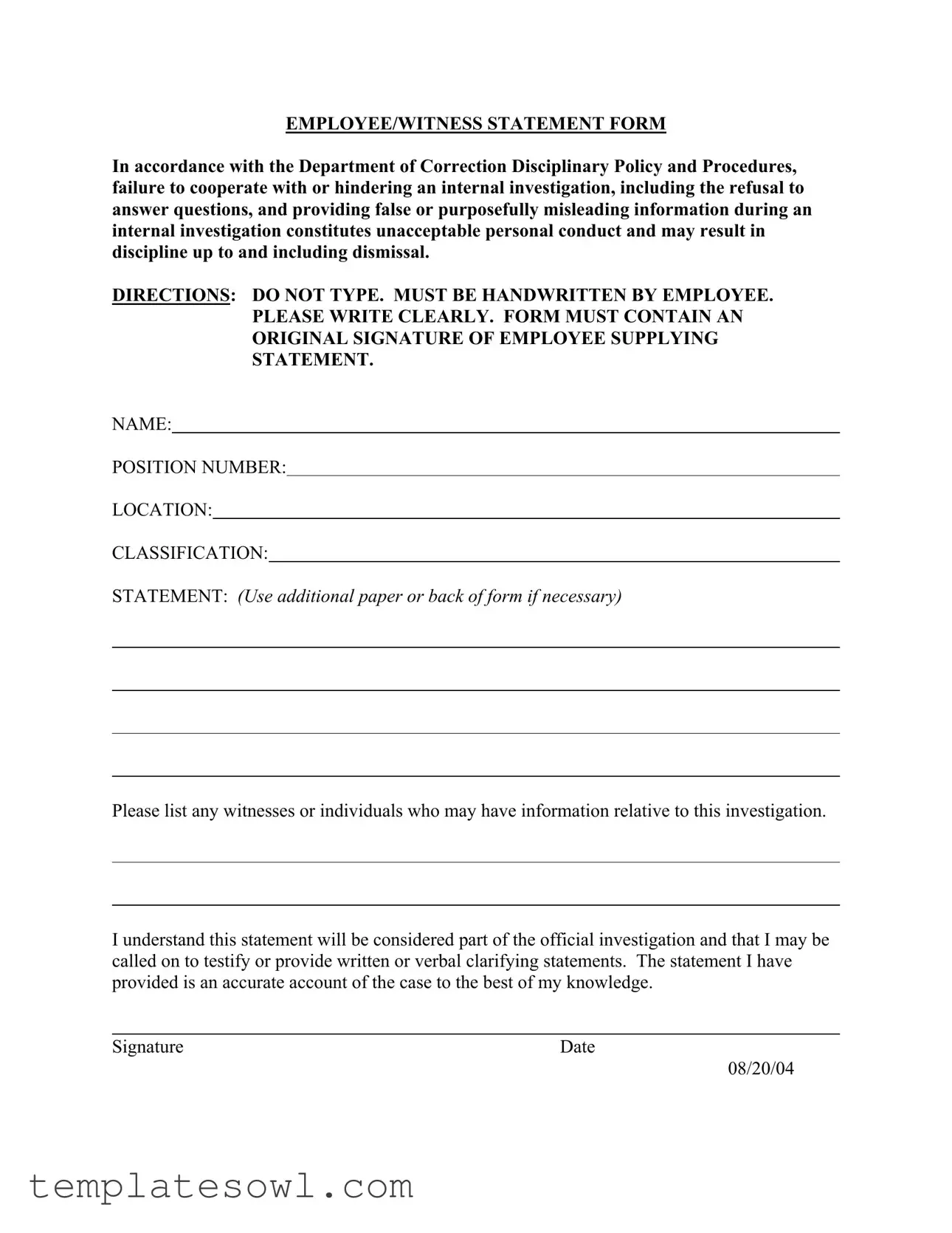What is the purpose of the Employee Statement form?
The Employee Statement form is designed to collect accurate and detailed information from employees regarding specific incidents or circumstances under investigation within the Department of Correction. It serves as an official record that can be used during internal investigations to ensure fairness and accountability.
Who needs to fill out this form?
Any employee who is involved in or has relevant information regarding an internal investigation is required to complete this form. This includes both witnesses and individuals directly connected to the incident in question.
How should the form be filled out?
It is important to handwrite your responses clearly on the form. Typed responses are not accepted. You can use additional paper if necessary to fully convey your statement. Ensure you sign the form at the end to validate the information provided.
What information is required on the form?
You will need to provide your name, position number, location, classification, and a detailed statement of the incident. Additionally, list any witnesses or individuals who may have pertinent information regarding the investigation.
What happens if I do not fill out the form?
Failure to cooperate, which includes not completing the Employee Statement form, can be seen as hindering the investigation. This may lead to disciplinary action, which could range from reprimands to dismissal depending on the severity of the circumstances.
Will my statement be kept confidential?
Your statement will be considered part of the official investigation. While there are policies to maintain confidentiality, the nature of investigations may require that some information is shared with relevant parties involved in the process.
What should I do if I remember additional information after submitting the form?
If you recall more details after your submission, you should communicate this information to the person managing the investigation. You may be asked to provide a supplemental statement, and it's important to keep the investigation informed with accurate information.
What is the significance of the original signature?
The original signature on the Employee Statement form is crucial. It validates your account and indicates that you acknowledge the statement is accurate to the best of your knowledge. This signature may also be important if you are required to testify or clarify your statements in the future.
Can the information I provide be used against me?
While the information you provide in the Employee Statement form is intended for the investigation, any inconsistencies or false information may lead to disciplinary actions. It is important to be truthful and precise in your account to avoid potential repercussions.

